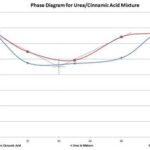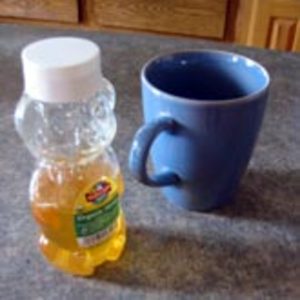Depending on which kind of freezer you have, you mother’s milk could last up to six mos., provided with right freezer and plastic breast milk storage bags, your breast milk could last even longer. In a compartment freezer nestled inside a refrigerator, breast milk could last up to two weeks upon various temperatures. In a compartment freezer nestled inside a separated from the fridge, breast milk could last up to three to four months under various temperatures. However, breast milk stored inside a deep freezer with a temperature of 0 Fahrenheit (-19 Celsius), lasting from six mos. or longer depending on certain storage supplies you are using.
On the contrary, Breast milk just freshly pumped last up to ten hours and refrigerated milk stays fresh up to eight days. Breast milk which recently chilled or thawed from being placed in the fridge and/or freezer could last up to eight hours. When pouring breast milk or feeding breast milk please don’t combined milk together and store it and/or feed it to your baby.
Make sure when storing breast milk you are following the directions for each storage product of choice. Yet, they may become broken, glass storage bottles are supposed to be the best option for storing breast milk. Temper glass storage bottles are considered safer than plastic storage bottles because the majority of baby feeding bottles produced through today major chemical vendors are made with a polycarbonate material. Polycarbonate is a material none to carry BPA which has been known to alter human hormone levels, especially in the reproduction organs. But, for your convenience non-polycarbonate (BPA Free), polyethylene and polypropylene (PVC) breast milk storage items which are safer for storing milk which doesn’t expose your baby to harmful chemicals are available for purchase.
Medela’s breast milk storage bags are non-durable, messy, rip very easily, and the fastenings to attach the bags to the breast pump suction cup doesn’t assure properly; making room for leakage. Fortunately, Medela’s plastic breast pumping and storage bottles are made of polyethylene and are an effective, efficient and safe way to store breast milk for your baby. Gerber’s breast milk bags are non-durable as well. Their bags tears even when they are frozen properly in the freezer, which is a hassle then a help. Your baby needs all the milk he or she can receive during feeding time. Frankly, lacking nutrient simply because milk is seeping down the drain is a no no. Another problem that reoccurs with Gerber breast milk storage bags is the reclosable zippers don’t close the bag securely.
Not all Gerber bottles and cups are made with polyethylene or polypropylene. Gerber is still using polycarbonate to produce their brand of bottles and cups. And, when Gerber does manufacture polyethylene and polypropylene cups they don’t use these PVC materials alone but combined with polycarbonate materials. So call Gerber’s customer service department for information on all their products because product contents do tend to change.
The most effective breast milk storage bags are First Years and Lansinoh Brands. These bags are definitely efficient, safe and reliable when storing your baby’s breast milk, without the worry of any tears or leakages. Which is best for you and your child. We parents have more issue to be concerned with throughout our day to day life then becoming entangles in the inner workings of insufficient storage bag products that crack, rip, tear or split allowing any contaminations seeping into a baby’s breast milk simple won’t do. Lansinoh storage bags are pre-sterilized, and this is another benefit for safe of store milk.
Unfortunately, the only company I am aware of that supply breast milk temper glass storage bottles are the Lansinoh company. And, their breast milk temper glass bottles are not available for purchase in the United States but only Canada and overseas. Here is a great alternative and solution to this problem, simply use Evenflo temper glass feeding bottles to store your breast milk.
When writing documentation for accurate information pertaining to dates, times and volumes/millimeters of your every breast milk sessions, please write this information on the tab provide on each storage bag product. If you write on the bags and not on the bags’ tabs you may cause an unintentional puncture in the body of these bags which may cause the bags to rupture. These actions also may cause the milk to be contaminated.
When filling out the storage bags’ tabs use a pencil or a ball point pen instead of a permanent marker or a felt tip pen. Permanent markers could run when wet and seep into the pours of the bag itself. Felt tip pens could also run and could smear when wet. Please don’t place bags of milk in the microwave, stove top, or bottle warmers or in a boiling hot water. These kinds of storage bags are not tough enough for this line of action. These bags will tear and come undone leaving a mess.
Breast milk does separate because human milk is not homogenized, so please don’t be alarmed. Simply stir breast milk with a clean spoon or gentle shake breast milk in a tightly closed bottle before served to your baby.
When warming frozen milk stored in a breast milk storage bag, simply run warm water directly over the bag or soak the frozen milk in a clean sink for a few minutes. Place in a clean bottle and serve. To warm refrigerated milk stored in a plastic breast milk storage bag, simply transfer milk from bag to clean feeding bottle then place the bottle in a bottle warmer. After placing the bottle inside the bottle warmer follow the bottle warmer’s manufacturer instructions on how to warming feeding bottles. These same instructions apply when warming milk in a temper glass breast storage bottle.
Warming milk in breast milk glassed storage bottles in a microwave or even stove top could be potentially dangerous. Glass material could shatter, harming you and your love ones. Warming milk in breast milk storage plastic bottles over the stove or in a microwave could boil chemicals into your baby’s breast milk. Another reason you shouldn’t place plastic storage/feeding bottles in a microwave or stove top is heat can cause the bottles too loose their form.
An effective way to keep track of glass and plastic stored breast milk is using a plastic label by Dymo. This way you won’t loose track of which breast milk is from which days, times and volumes. Also some plastic labels are easier to remove than a paper label and quicker to record information on.
Ok, we all know it’s all true that for every object created by man will become unfunctional, just be mindful and use each product wisely and with care.





